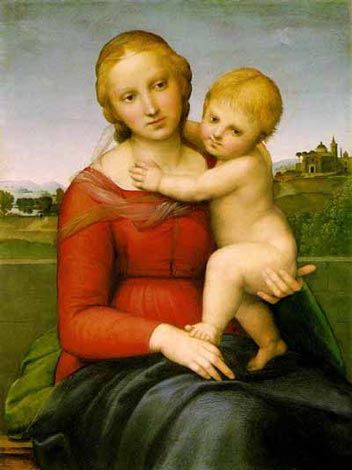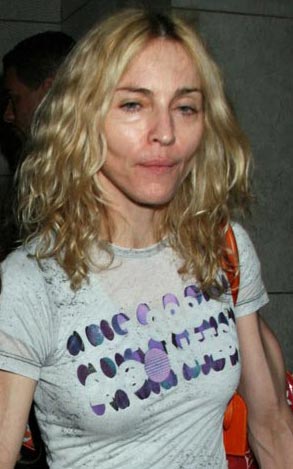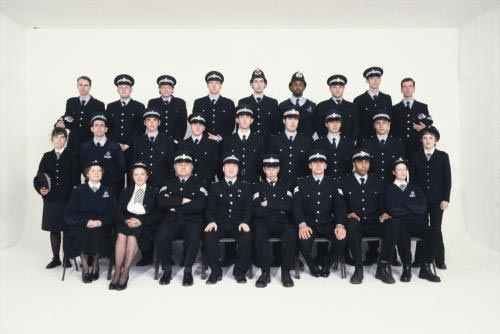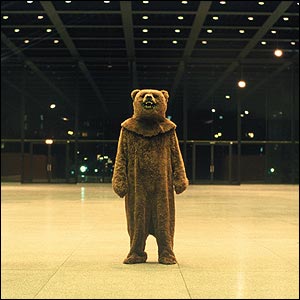return to homepage THE TURNER PRIZE
return to updates
by Miles Mathis
this is a picture of celebrated, distinguished, and expensive art
no, really
it really is
The Turner Prize is the largest prize for art in the United Kingdom and the world. In the amount of £40,000 (or $60,000), it has been given annually since 1991 to an avant garde conceptual artist. This artist must be under 50 and British. The prize amount is just a beginning for most artists chosen, since the publicity can generate hundreds of times that figure. Although the prize is named for the 19th century landscapist J. M. W. Turner, no realism is ever shortlisted or longlisted. The lists are made by critics and administrators, and the criteria are all critical and political. The prize is underwritten by corporations (such as Gordon's Gin) and is physically given to the “artist” by a “distinguished” celebrity (such as Yoko Ono, Nick Cave, Dennis Hopper, or Madonna). The prize has close ties to the Tate Galleries in London, and the director of the Tate Modern, Nicolas Serota, has been a central player in promoting the prize since the late 90's. Serota is normally the chairman of the selection committee and prize jury.
In the last decade, the Turner Prize has also infiltrated the Tate Britain, which was initially supposed to be the non-Modern wing of the Tate Galleries. As late as 2000, the Tate inhabited only the old building on Millbank, which showed 19th century paintings from artists like Sargent, Millais, and Burne-Jones, as well as special galleries for Turner and the occasional modern or contemporary exhibit. But when the Tate Modern was erected at Bankside Power Station, the contemporary exhibits were to be shown there. The old Tate was renamed the Tate Britain, and it was to be the home of 19th century British realism. However, due to the influence of Serota, the Turner Prize exhibit, which is flagrantly contemporary, has been staged at the Tate Britain. This was said to be done to increase the traffic at Tate Britain, but its clear intent is to slowly transform the Tate Britain into another Tate Modern, pushing the old art aside. Other examples prove this, such as the Tate Britain allowing one of its prize possessions, a full-size marble of Rodin's The Kiss, to be wrapped in string by an avant garde “artist”. Serota and the other modern promoters care nothing for art and only want to create a greater and greater spectacle. If art history has to be destroyed in the process, so much the better. What is art history compared to large lines, lots of press, and great piles of dirty money?

Famous winners of the Turner Prize include Rachel Whiteread, who won for a concrete cast of a real house; Gillian Wearing, who won for a video of several actors in police uniform standing still for an hour; Chris Ofili, who painted with Elephant dung; Martin Creed, who won for a room with lights going on and off; Mark Wallinger, for a video of himself in a bear costume in a museum. Other famous nominees are the Chapman Brothers, for sex dolls in a 69 position; Fiona Banner, for a pornographic text; Damien Hirst, for a shark in a tank; and Tracey Emin, for putting her bed in the museum.


One of the most famous events connected to the Turner Prize is Madonna's live TV quote, “At a time when political correctness is valued over honesty I would also like to say right on motherfuckers!” Unlike everyone else, I do not think the profanity at the end is the problem here. Profanity neither impresses me or offends me. But since she was giving the prize to a room of blinking lights, it is not clear what “honesty” she is talking about. Are blinking lights honest; are they politically incorrect? Is some bravery being exhibited, by the artist or by herself? Is someone being progressive here in some way that I am missing? When Camille Paglia defends Madonna, she should really be required to address comments like this, which are signs of Madonna's true intelligence, integrity, and talent level. And this is why I put “distinguished” in quotes above. Madonna is not a distinguished person, she is a famous person, which is not at all the same thing. In the new world, people don't get famous for being distinguished, they get famous for being indistinguishable from the human trash all around them. None but the most vulgar, seeking attention for its own sake, would have anything to do the Turner Prize, and that includes all the judges, sponsors, emcees, promoters, artists, and media hacks involved.
In October of 2007, the Independent ran an article with the title “What's the point of the Turner Prize?” This is the answer they gave to that question:
The Turner is designed as an instrument of publicity – for the Tate, for contemporary art, and for the sponsor. In short, the Turner is about the media, without whose coverage it would cease to exist. It is the media that have made it "one of the most important and prestigious awards for visual arts in Europe". Perhaps only the British media – philistine, controversy-hungry, and much berated by arty types for being so – could have had this effect.
That is a pretty good answer, except that it still doesn't state the case strongly enough. The article was written by someone who “was on the new Northern Art Prize jury recently”, and so we get a varnished truth. The unvarnished truth may be stated by interpreting the quote above, by pushing it in only a small way. “Instrument of publicity” may be read as “propaganda.” The Turner Prize is primarily state-sponsored propaganda for the current art market, to keep the prices absurdly inflated. True, the State does not underwrite the award money itself, the corporation does that, but in the modern world there is little difference between the State and the corporation anyway. And the State certainly underwrites the prize in other ways, by providing public space to exhibit it, public airwaves to promote it, and public monies to purchase exhibits for the Tate Modern. In 2008, Parliament dedicated around £60,000,000 of public monies to the Tate. Since the Tate only generated about £8,000,000 from entry fees and catalog sales and so on, the bulk of the operating expenses of the Tate are underwritten by taxes.*
This can only mean that the art market is propped up by using tax dollars. Modernism is subsidized and has been for a long time. The contemporary art market, which is enjoyed by only a few and despised by most, is subsidized and propagandized with tax dollars. And this is also true in the US, where things work precisely the same way. After the art wars in the 90's, when many conservatives attacked the NEA in the US for funding “immoral” art like Andres Serrano's “Piss Christ”, the subsidizing of the art market became more sophisticated and more clandestine. Congress can no longer fund transgressive shows and museums directly, via the NEA, but public monies are spent to promote the avant garde nonetheless, through tax write-offs to charities and foundations, through use of public buildings and pubic utilities [see my article on the National Portrait Competition], and through state and local funding (which is less likely to create national scandal). As with other markets that are subsidized by the government, like banking, oil, insurance, and so on, the promoters of modern art find a way around any law or custom. If the subsidies cannot be applied in the light of day, they are applied in backrooms, behind closed doors, through offshore banks, in unaudited transactions.
As we see in the quote above, the media is admitted to be a part of this propaganda, too, but it is rarely seen that the media is subsidized, funded, or owned by government as well. Many or most of the media sources that propagandize contemporary art, online or off, have public sources of income. Congress may not authorize this funding, but it happens nonetheless. The CIA, NSC, and other government agencies have given start-up money or funding to many outlets, including Google, Yahoo, Facebook, Wikipedia, and so on. They also supply editing and content to all sources, including The New York Times, Fox, CNN, MSNBC, and ALL other mainstream sources [see my article on CIA editing and writing news at the NYT]. Art propaganda is admittedly a small interest in this, the government having a much greater stake in war propaganda, but art propaganda is part of the larger heading “business propaganda”, you see, which includes both the business of war and the business of art. Just as the Pentagon pays to be sure its business is featured each day, the business of art also pays. It is no accident, public service, or belief in newsworthiness that ensures you read about the avant garde on a regular basis. It is part of the propaganda machine, paid for by business, and often paid for with your tax dollars.

But let us return to the Turner Prize, as a specific example of this. According to the Telegraph,** “The Charity Commission discovered that the Tate spent more than £700,000 on seven works of art by (its own) trustees in the past nine years, but did not seek independent valuations or even require the artist-trustees to leave the room while the purchases were approved.” The major figure in this scandal, besides Nicholas Serota, was Chris Ofili, the 1998 winner of the Turner Prize and an artist-trustee of the Tate. Although the Charity Commission found the Tate guilty of this “breach of charity law”, it said no criminal laws had been broken and there were no consequences. Ofili kept his million dollars and Serota kept his job. In this way, both the thieves and their protectors proved once again that you can steal from the treasury, get caught, and not be punished.
Of course, our juror from “the new Northern Art Prize jury”, writing for the Independent (above), cannot be bothered to mention any of this. Although she admits that the press in the UK is “philistine”, she cannot admit the same of herself or the administrators of the art market. She is too busy promoting herself and the market. In the article “What's the Point of the Turner Prize?” she says that these prizes do “have a rubric concerning genre, about engaging with current critical debates.”
It enforces its unstated artistic protocols through its choice of jurors and their general peer-group understanding that carving otters in soapstone, say, is not something that people like us take seriously. The situation is hardly extraordinary. A state art prize will tend to require conformity to the ruling canons of taste.
Unlike most critics, this critic admits that this conformity exists, and she even calls it conformity. But she cannot address the questions begged by this set of simple declarative of sentences. One, the current market enforces its “unstated artistic protocols” by choosing jurors that are not artists. For example, in 1998, the year Ofili won, the jury for the Turner Prize was musician Neil Tennant (Pet Shop Boys), author Marina Warner, curator Fumio Nanjo, and British Council officer Ann Gallagher, chaired by Nicholas Serota. Not one visual artist. In 2006 the jurors were Lynn Barber, journalist, The Observer; Margot Heller, Director, South London Gallery; Matthew Higgs, Director and Chief Curator, White Columns, New York; Andrew Renton, writer and Director of Curating, Goldsmiths College; Nicholas Serota, Chairman of the Jury. As usual, not one artist to define artistic protocols of visual art. Two, we get no definition of the “ruling canons of taste.” The ruling canons are ruling, in the sense that no one has been burned at the stake yet: the people who are at the top are at the top, for whatever reason, and so they can be said to be ruling, in a way. But there is no list of qualifications. Why are these people ruling? Who chose them and why? We have no aristocracy or democracy here. No one was voted in and no one earned their way in on merit. If, in fact, they are self-appointed and have no least qualifications, is it proper to say that they are ruling? Wouldn't it be more precise to say that they are on a crude temporary pulpit of their own making, one that will soon be knocked over by some other vulgarian? That is not ruling, that is grandstanding.
Likewise, if the artistic canons are propped up by non-artists with no qualifications, then it is not clear that “taste” has any meaning. Taste, like any other real qualification, is something either gained with great effort or blessed by the Muses. In the context above, taste has no meaning. The art promoted is not promoted for reasons of taste, good or bad, real or unreal. It is promoted for financial reasons. The top galleries have found that art of this sort can be inflated more easily than other kinds of art, so they want to stick with it. It is easy to produce in vast quantities—sort of like effluent—and it confounds rich and poor alike. It can absorb any amount of textual overlay or other blabbing, and allows for a vast administration of talentless boobies. Modern artists are glad to share their field with any amount of outsiders, pretenders, and phonies, and so these people naturally flock to be part of the game.
In the phrase “ruling canons of taste”, if you have no ruling and no taste, you can hardly have any canons. A canon is an authoritative standard of judgment, but I have shown that we have an authority based on nothing, and no standard. All we have is a judgment based on financial considerations. Such a judgment is not a canon, it is propaganda. Our juror proves this in the article, where she says,
Another objection is to wonder how one can make a choice between the very disparate kinds of work that do get shortlisted. This doesn't seem much of a problem to me. Simply employ the negative criterion of boringness. Here are four imaginations at work. Which seems the least dull? The least cliché-ridden? There isn't always an obvious answer, but the principle is easy to apply.
Does that sound to you like an authoritative standard of judgment, one that could create a canon? No, that is not a canon, that is one negative criterion. Unfortunately, it is the only criterion one can apply to such work. How else can you judge work that purposely avoids all positive qualities?

And here we hit yet another contradiction of contemporary art. We are told that contemporary art is commentary upon the ship of fools we find ourselves aboard, a critique of the emptiness of modern capitalistic, bureaucratic, imperialistic culture. But how is it possible to critique a ship of fools by creating a more foolish ship? You do not right a sinking ship by drilling more and larger augur holes in the hull. The truth is, contemporary art is not about that. The avant garde passed “art as critique of culture” 90 years ago. How is a room of blinking lights a cultural critique? How are actors standing still a cultural critique? How is my bed in a museum a cultural critique?
We are being lied to once again. Contemporary art is not about progressivism of any sort, it is only about puerile transgression. It is the continuing competition, started by Duchamp, to find the least artistic thing and put it in a museum, and then to chuckle like a naughty child. In this way, our juror's sneer at the “otter carved from soapstone” loses all its punch. An otter is not an intellectual subject, but is a room of blinking lights an intellectual subject? Is that the claim? Are we supposed to admire these artists and critics as intellectuals? Is Damien Hirst being presented to us an intellectual? Is Grayson Perry supposed to impress me as an intellectual? This juror says that “people like us” don't take realism seriously, but am I supposed to take her seriously as a critic when she judges as she does, when she writes as she does? Because the simple fact is, I don't. I have her beat in every way, both artistically and intellectually, so why should she expect me to respect her or to bow to her qualifications? I think she is a much greater fool than the worst carver of otters. Her mind, on display in this article, is a much shallower and more polluted pool than any mind of any carver of any otter imaginable.
And that goes for “Sir” Nicolas Serota even more. Not only do I lack all respect for him, I also must lack all respect for those who would knight such a person. In the case of Serota, I honestly do not understand it, not only because he is undeserving of all reward—except those in hell—but because I had thought that Prince Charles despised him. I had thought the sovereign had final authority on knighthoods, or at least veto power, and I would have thought Charles had some influence with his mother. In this one way, it is a pity the future king does not have more authority. Serota should be sent to the Tower for his crimes against art and art history.
*http://www.tate.org.uk/about/governancefunding/funding/accounts_20072008.pdf
**http://www.telegraph.co.uk/news/uknews/1524291/Tate-broke-charity-laws-by-buying-art-from-its-trustees.html
If this paper was useful to you in any way, please consider donating a dollar (or more) to the SAVE THE ARTISTS FOUNDATION. This will allow me to continue writing these "unpublishable" things. Don't be confused by paying Melisa Smith--that is just one of my many noms de plume. If you are a Paypal user, there is no fee; so it might be worth your while to become one. Otherwise they will rob us 33 cents for each transaction.